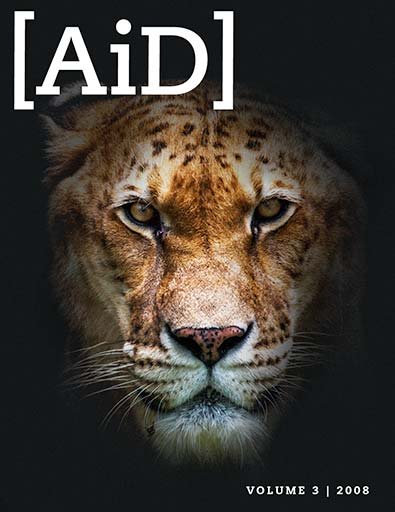
Human Evolution—Faster than a Speeding Bullet
Abstract
A recent study claims that the rate of mutation has sharply increased over the last 10,000 years. But what is the reason for this change?
Keywords: human evolution, adaptation, descent, modification, chromosomes, DNA, population growth, climate changes, genome, adaptive mutations, ethics
Recent news reports have flashed headlines of speedy human evolution with the implication that instead of becoming more alike, humans are becoming more different.1, 2 In a paper published in PNAS,3 researchers reported the comparison of the genomes of several different people groups and showed that many genes appear to have recent mutations and that the rate of mutation has sharply increased over the last 10,000 years. Population growth and migration, followed by the need to adapt to different climates, are given as possible reasons for these so-called adaptive mutations. But is this an example of evolution or adaptation?
Defining Terms
Again, it becomes crucial to define what is meant by evolution. The common definition is “descent with modification,” which results in a single-celled organism becoming man via time, chance, and natural laws. Although the title of the paper is, “Recent Acceleration of Human Adaptive Evolution,” the evidence instead supports the idea of adaptation, not evolution. Adaptation implies changes in the genetic makeup which allow an organism to survive better in a given environment. The changes or mutations do not add information but instead alter current genetic information which offers no mechanism for the common descent of all living things from single-celled ancestors. Perhaps the authors define evolution as “change in genetic makeup over time” in which case their title is accurate. However, to an undiscerning public it is likely that evolution will mean the molecules-to-man variety and that this research is further proof of it.
Determining Recent, Rapid Human Evolution
The authors compared the genomes of people belonging to four different people groups: Han Chinese, Japanese, Africa Yoruba, and Northern Europeans. They specifically focused on looking at similarities and differences in the patterns of single nucleotide polymorphisms (SNPs). The following is a description of a SNP:
Imagine walking along two chromosomes—the same chromosome from two different people. Chromosomes are made of DNA, a twisting, ladder-like structure in which each rung is made of a “base pair” of amino acids [sic, nucleotides], either G-C or A-T. Harpending [an author of the paper] says that about every 1,000 base pairs, there will be a difference between the two chromosomes. That is known as a SNP.4
If the pattern of SNPs on a particular stretch of chromosome is identical among people, then the SNP pattern occurred recently. Older SNPs would not show identical patterns among people groups. DNA is actively shuffled and rearranged and so the SNP patterns become more dissimilar among people as time passes. To illustrate this idea further let me use an example from the wonderful world of motherhood. If I organize my daughter’s toy room and take a picture of it each hour following my clean up, I would see a continual progression of increasing disorder. The picture from the first hour might not show any changes (maybe she was taking a nap!); the third hour might show some toys out of place; the fifth hour would show more toys out of place; and by the seventh hour it would be total chaos. The more time that passes since the initial organization, the more differences there would be. The same is true for the pattern of SNPs on the chromosomes: the less time that has passed, the more similar the SNP patterns among people, and the more time that has passed, the less similar the SNP patterns.
The authors found 7% of the genes (in the human genome) show signs of “rapid, recent evolution.”4 In other words, the SNP patterns in these genes are identical among the different people groups studied and have been termed adaptive mutations. While it is obvious why they believe the changes in these genes are recent (less than 10,000 years ago), why do the authors consider these changes to have occurred quickly? The authors predicted that adaptive mutations would occur at a constant rate throughout human evolutionary history. They give several reasons as to why, based on their findings, the rate is not constant, but the most intriguing one is related to our proposed chimpanzee ancestors.
Using the mutation rate that they are suggesting began less than 10,000 years ago and extrapolating back 6 million years ago when humans supposedly split from chimps gives an “implausible” number of adaptive mutations. So, the rate observed in the past 10,000 years is much faster than the rate for the previous 6 million years. The problem with their conclusion is it is based on the false assumptions that humans evolved from chimps and the earth has existed for billions of years. From a creationist perspective it is plausible that this has been the rate of adaptive mutation in humans since the Fall and was necessary to allow humans to adapt and survive in a post-Fall world.
Population Growth and Climate Changes
The authors propose two mechanisms that may have been responsible for the recent speedy human evolution: population growth (more people, more mutations) and migrating human populations that needed to adapt to varying climates. From a biblical perspective these events would have occurred shortly after the Flood. God told Noah and his sons to “Be fruitful and increase in number and fill the earth.” (Genesis 9:3).
After the confusion of languages at the Tower of Babel (Genesis 11), people groups of the same language would have migrated to different parts of the world and needed to adapt to a world that had been drastically altered by the Flood. It is plausible that the rate of adaptive mutations increased shortly after the Tower of Babel (possibly as part of a stress response) approximately 4500 years ago. Another possibility is that the SNP patterns actually represent created genetic diversity (by God) instead of adaptive mutations. This created genetic diversity would be either selected for or against depending on the environmental conditions. God foreknew that people would need to be able to adapt and survive in a dramatically different world than the perfect world He originally created.
Ethical Implications
Some are worried about the ethical implications of this research. If humans are becoming more dissimilar (based on genetic differences) then there will be a basis for discrimination. From an evolutionary perspective, this should be considered a real scenario. It is plausible within an evolutionary framework that some people groups are “evolving” faster than others, and so, we are not all equal. This racist idea was widely held by Darwin and his contemporaries.5
Harpending, one of the paper’s authors, states, “[genetic differences among humans] cannot be used to justify discrimination. Rights in the Constitution aren’t predicated on utter equality. People have rights and should have opportunities whatever their group.”4 Agreed, but what is the basis for this idea using an evolutionary worldview?
[I]f we evolved from an ape-like ancestor and are nothing more than animals ourselves, where do we draw the line concerning who has “rights”?
Using a biblical worldview, the Bible is the basis for saying that all people are equal (Acts 17:26) and that we are different from animals because we are made in the image of God (Genesis 1:26). If there is no basis for determining truth, then it is only Harpending’s opinion that people should have rights no matter their group. In addition, if we evolved from an ape-like ancestor and are nothing more than animals ourselves, where do we draw the line concerning who has “rights”? Maybe the apes and chimps in the zoo should also have the rights afforded to people. And why stop there because then we are discriminating against the lowly bacteria, with whom we share a common ancestry. Humans would be guilty of committing genocide every time they washed their hands with anti-bacterial soap!
Conclusion
Co-author of the paper Gregory Cochran stated:
“History looks more and more like a science fiction novel in which mutants repeatedly arose and displaced normal humans—sometimes quietly, by surviving starvation and disease better, sometimes as a conquering horde. And we are those mutants.”4
In some ways this is an accurate description of what has occurred with humanity since the Fall. Post-Fall humans (mutant humans) have definitely replaced originally created-perfect humans (normal humans)! However, God in His providence has provided ways that allow us to adapt and survive in a sin-cursed world. More importantly, God provided His Son Jesus Christ so that we would not endure an eternity in Hell, but have the opportunity to enjoy an eternity with Him in Heaven.
Note/disclaimer:
As a creation geneticist who has studied extensively the role of adaptive mutations in bacteria, I find the role of adaptive mutation in humans to be highly speculative (which is why I suggested the possibility of created genetic diversity). I have co-authored two papers on this topic that have been accepted by the 2008 International Conference on Creationism (ICC). ICC papers will be available for purchase later this year.
Footnotes
- Anna-Marie Lever, “Human Evolution is ‘Speeding Up’,” BBC News, December 11, 2007.
- AFP, “Human Evolution Speeding Up: Study,” December 11, 2007.
- John Hawks et al., “Recent Acceleration of Human Adaptive Evolution,” PNAS 104 no. 52 (2007): 20753–20758.
- “Are Humans Evolving Faster?,” University of Utah, December 10, 2007.
- Jerry Bergman, “Was Charles Darwin a Racist?,” CRSQ 44 no. 1 (2007): 27–35.
Recommended Resources

Answers in Genesis is an apologetics ministry, dedicated to helping Christians defend their faith and proclaim the good news of Jesus Christ.
- Customer Service 800.778.3390
- © 2024 Answers in Genesis




